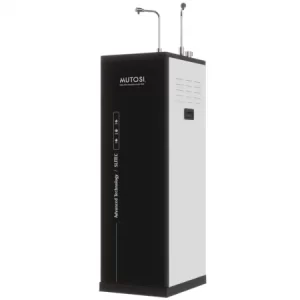Hot and cold water plants play a crucial role in various settings, including residential buildings, commercial complexes, hospitals, hotels, and industrial facilities. These plants ensure the efficient distribution and regulation of hot and cold water throughout the premises, catering to diverse needs such as bathing, cleaning, heating, and cooling. To achieve optimal performance and reliability, these systems consist of several key components working in harmony. In this article, we will explore the essential elements that make up a hot and cold water plant. The first critical component of any water plant is a reliable source of water. This may involve connecting the plant to the municipal water supply or utilizing an on-site water source such as a well or borehole. Adequate filtration and treatment systems are implemented to ensure the water meets the required quality standards for consumption and usage.

To achieve the desired hot and cold water temperatures, water plants employ specialized equipment. For heating, boilers or water heaters are used, which utilize various heat sources like gas, electricity, or renewable energy systems. These systems efficiently raise the temperature of the water to meet specific requirements. On the other hand, for cooling purposes, chiller units or cooling towers are employed. Chillers remove heat from the water, lowering its temperature, while cooling towers use evaporation to dissipate heat. These mechanisms are essential in maintaining a comfortable and safe environment in various applications, including air conditioning, process cooling, and refrigeration. Pumps are the workhorses of water plants, ensuring the smooth movement of water throughout the system. They are responsible for supplying water from storage tanks to the intended points of use, as well as maintaining the required pressure levels. Circulation systems are particularly important for hot water plants, as they ensure hot water reaches all outlets in a timely manner, reducing wastage and minimizing the wait time for hot water.
To regulate the flow, temperature, and pressure of water in the plant, a network of valves and control systems is installed. These components enable the precise adjustment and balancing of the water distribution system. Valves, such as gate valves, ball valves, and thermostatic mixing valves, allow for manual or automatic control over different aspects of water flow and temperature. Control systems, often incorporating sensors, actuators, and programmable logic controllers, monitor and adjust the functioning of the water plant. They ensure optimal operation, energy efficiency, and safety by managing temperature settings, water levels, and pressure variations. Hot and cold water cay nuoc uong nong lanh plants are intricate systems comprising several vital components that work together to ensure a constant and reliable supply of water at the desired temperatures. From water sources and storage tanks to heating and cooling equipment, pumps, valves, and control systems, each element plays a crucial role in maintaining efficient water distribution and meeting the diverse needs of different settings. By understanding these key components, we can appreciate the complexity and importance of hot and cold water plants in our everyday lives.
